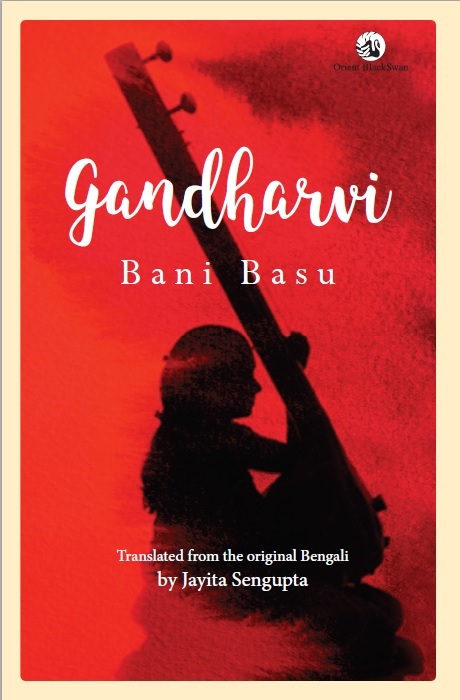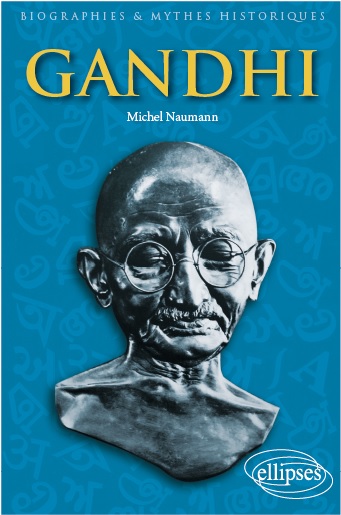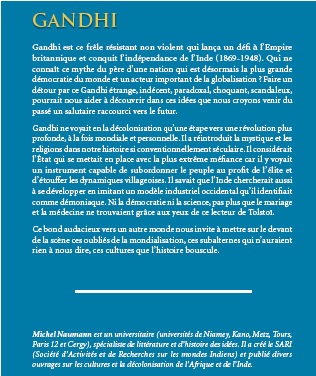A paraître Gandharvi, biographie d'une musicienne écrite par le romancier bengali Bani Basu et traduite en anglais par Jayita Sengupta aux éditions Orient Black Swan

Extraits
Apala turned around startled. Shibnath had never seen such a strange smile on her face before! “Can’t you understand? Can’t you really?” She whispered. “I am singing the alap of Darbari! Look these are the meends! Here! This is a long one from the komal nishaad in the lower octave to the komal gandhaar or the third minor of the higher pitch. See, I am swaying in the komal gandhaar for quite some time, subtly touching the rishabh and then back to shadja. Now I am rising … look! … Ma, Pa, komal Dha, komal Ni and Sa of the higher pitch! But I cannot separate the bandish from the alap at all. That’s the problem! Look how the tans have come and gone! These … small bunches of speed tans! After four revolutions of tans, see, how I have come back to the keynote. I am going to start another now.” With tears in his eyes, Shibnath fondly caressed her head and said, “Apu, you’ll get back your voice! It will come back to you! Why are you acting crazy? Soham and I will take you to the best hospital in the world! Aren’t we there with you?”
Apala continued in her broken, whispering voice, “I am almost stifling, not being able to sing. So, I sat down to do that! Look! Look from a distance, and see that through this entire alap … that’s me Apala, a woman singing! This too is there! … I mean it is not really I but the singer in me and who sings! My inside …”
Shibnath had to. It was a fact that after Apala had pointed it out, he could detect an elegant form cradled in the waves of colours, … heavy bottomed, yet slender like tanpura, an engrossed figure of a woman or an image or a feminine figure. No eyes or limbs. Only a wavy rhythmic posture!
Apala explained, “I am not done yet! Once complete, you’ll be able to understand better.” Shibnath sat numbed. The night whispered to him, “I, … I can’t love anything more than music!” The essence of these words spoken long back seemed like a long night sigh! Apala refused to get up till she was done with the last stroke. She had the habit of sitting at a stretch for long four or five hours! When at last the last stroke was done, it was past nine in the morning! There was a crowd before the room! Titu, Bonnie, Rano and their grandparents! Parulbala suddenly started crying loudly, “ Oh God! Why did you do this? Ma Bhabotarini, I’ll give you whatever you ask for! Please give back my daughter-in-law’s voice! If she continues this way, she’ll go mad!”
Titu closed her palm over her grandma’s mouth and said, “Thamma, keep quiet! Please! This is not the time for crying like this.” For, only she could feel that this was a rare moment! A divine moment!
Liste des ouvrages traduits des langues indiennes et publiés par Oxford University Press et Macmillan India
Cliquer sur le lien suivant
List of translations edited by Mini Krishnan (since 1992)
Publication ouvrage
Michel Naumann, Gandhi, Ellipses, 2016.


Evelyne Hanquart-Turner, La voix anglophone du roman indien, de l’Empire à la diaspora, Paris : L’Harmattan, 2013.
De la colonisation à la mondialisation contemporaine, les écrivains indiens ont utilisé l'anglais pour faire entendre la voix des communautés diverses, héritières d'une longue tradition culturelle. Dans une langue étrangère qu'ils se sont appropriée et qu'ils ont transformée en l'une de ses variantes les plus riches et colorées, ils apportent aux lecteurs du monde entier une vision de la vie qui leur est propre et qui se nourrit aux sources millénaires d'une culture complexe, raffinée et profonde.
http://www.editions-harmattan.fr/index.asp?navig=catalogue&obj=livre&no=40584
Jean Samuel Sahaï, Adagio pour la Da, Editions Atramenta, Guadeloupe.Essai sur Indiens des Antilles de Henry Sidambaram à Aimé Césaire
« Cette belle étude nous rappelle que la Da de Césaire était une Indienne et qu’elle lui chantait des comptines en tamoul, que la commune d’enfance de celui-ci est celle de la Martinique qui compte le plus d’Indo-Martiniquais, et que toute sa vie, Césaire s’est passionné pour la langue tamoule, l’une des plus vieilles de l’humanité, faut-il le rappeler. Oui, dans la Négritude de Césaire, il y a eu une part non négligeable d’Indianité. » - Raphaël Confiant, Écrivain, professeur des universités (UAG).
Eté indien, dixième édition au musée Guimet
Le site du musée vous donne (auditorium- présentations) le programme complet des séances de cinéma.
Dépendances
et indépendances : cinémas indiens
13 et 14 novembre
2013
Les Cinémas indiens – IRCAV
Groupe de recherche sur les formes filmiques plastiques et sonores indiennes
Université Paris 3 Sorbonne Nouvelle
http://lescinemasindiens.wordpress.com/tag/colloque/